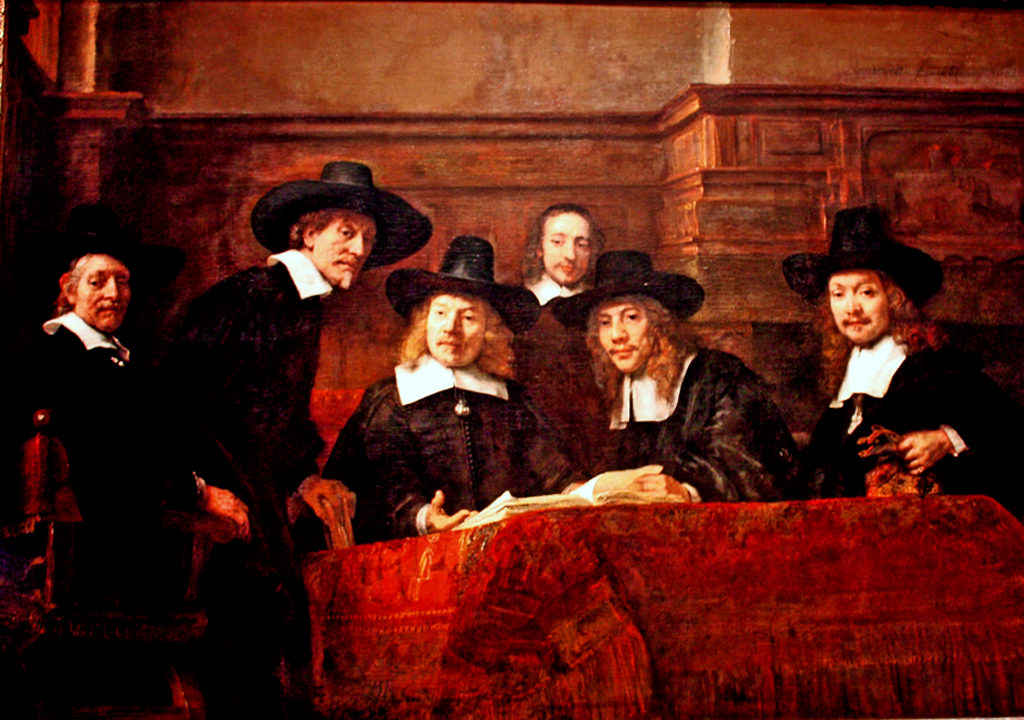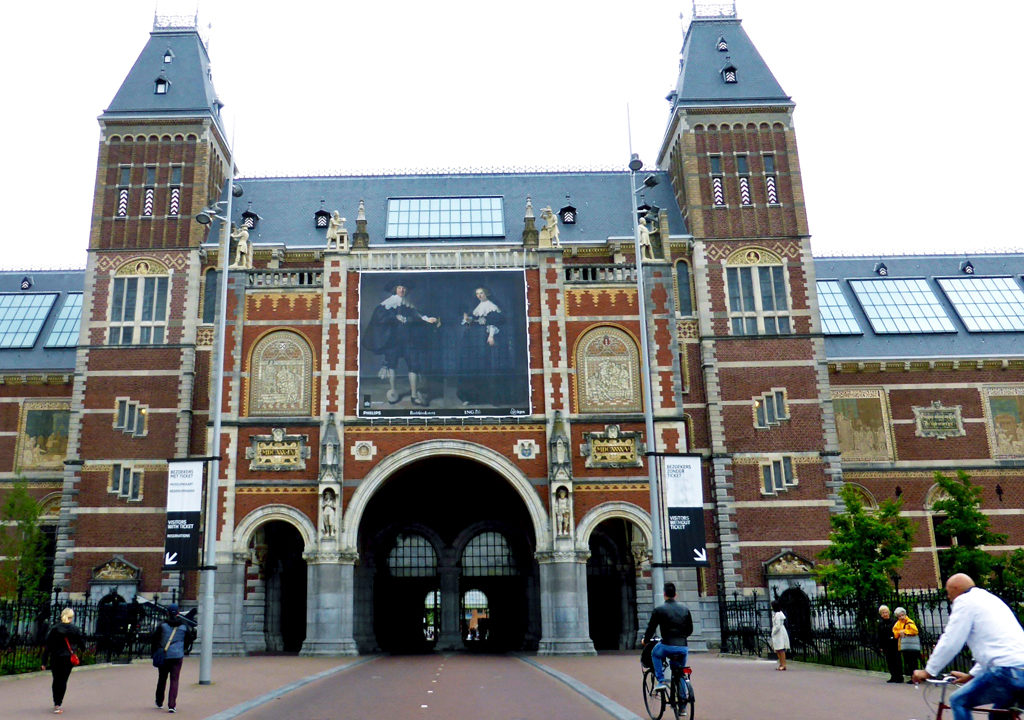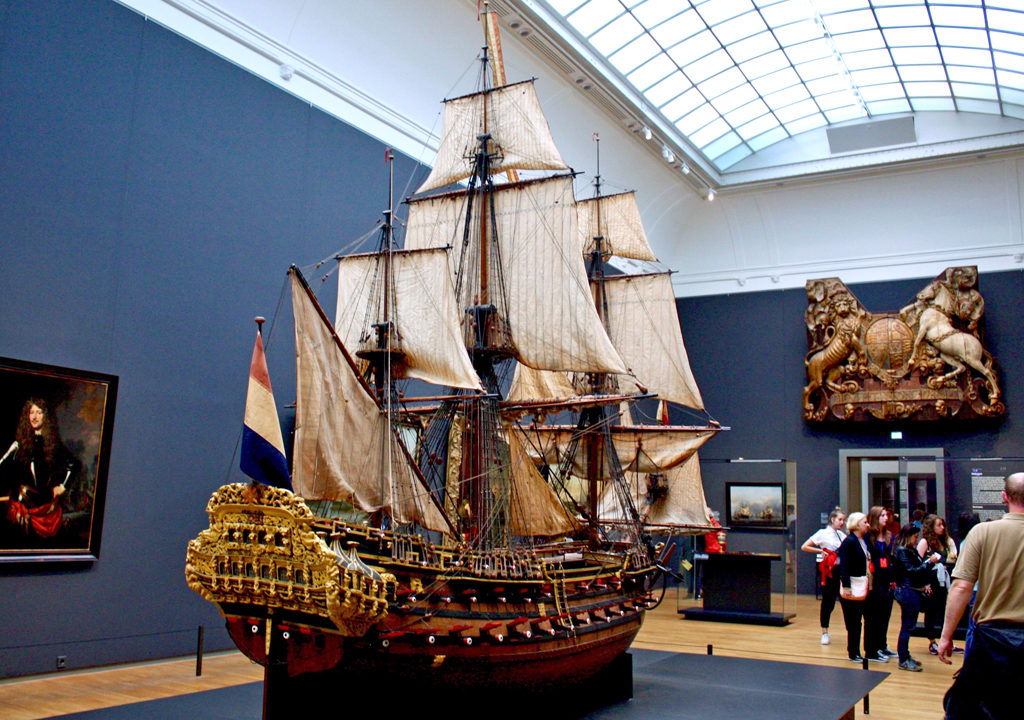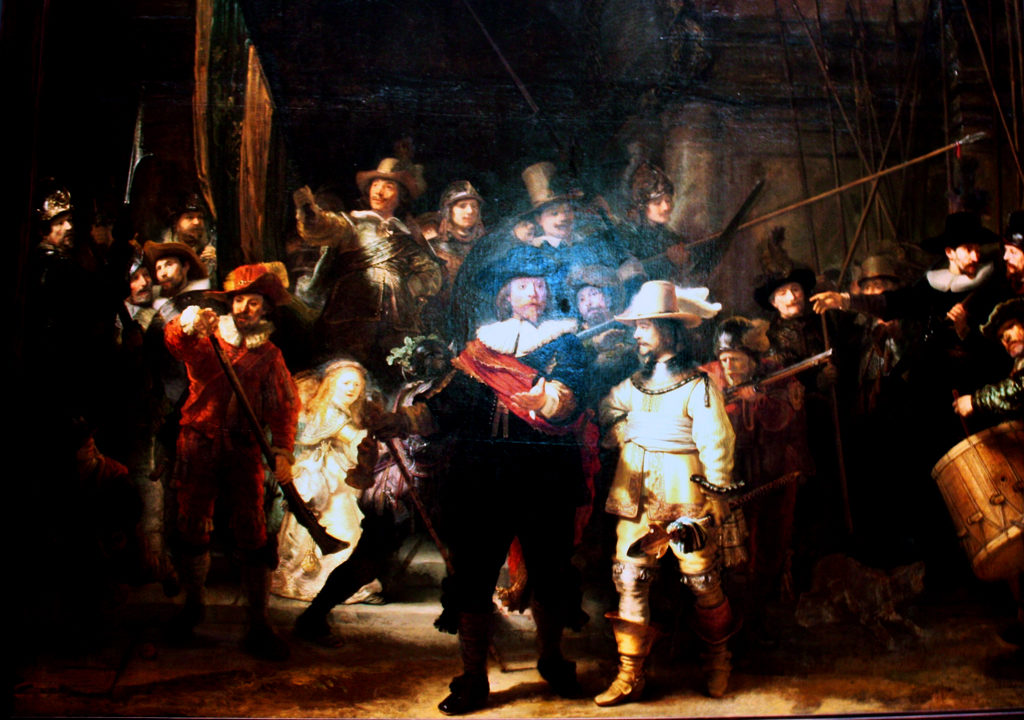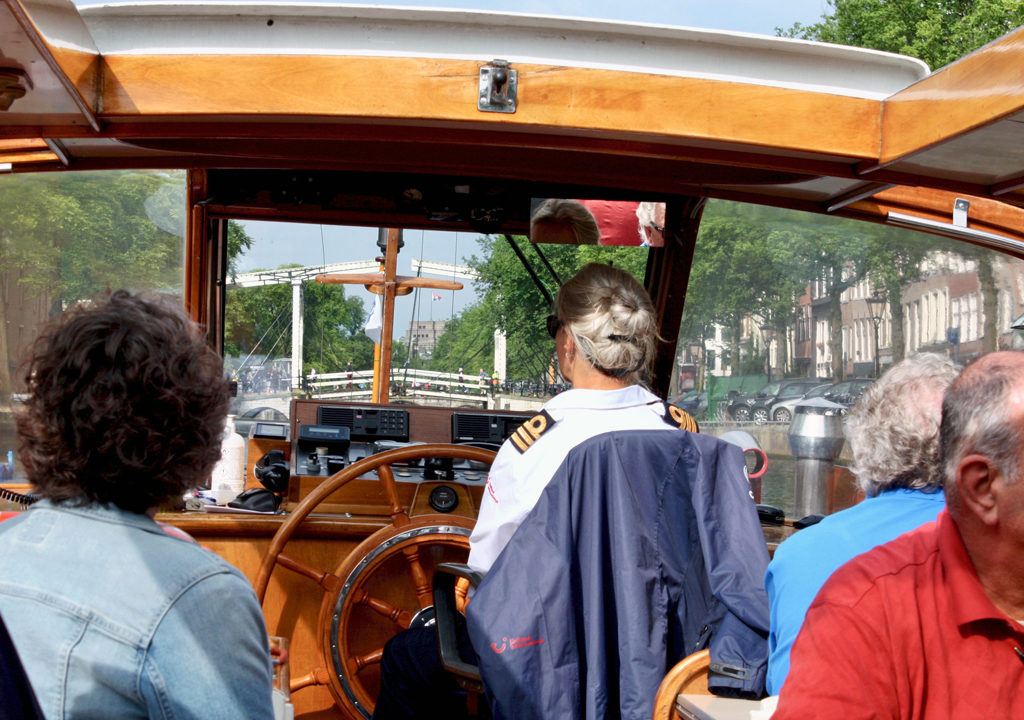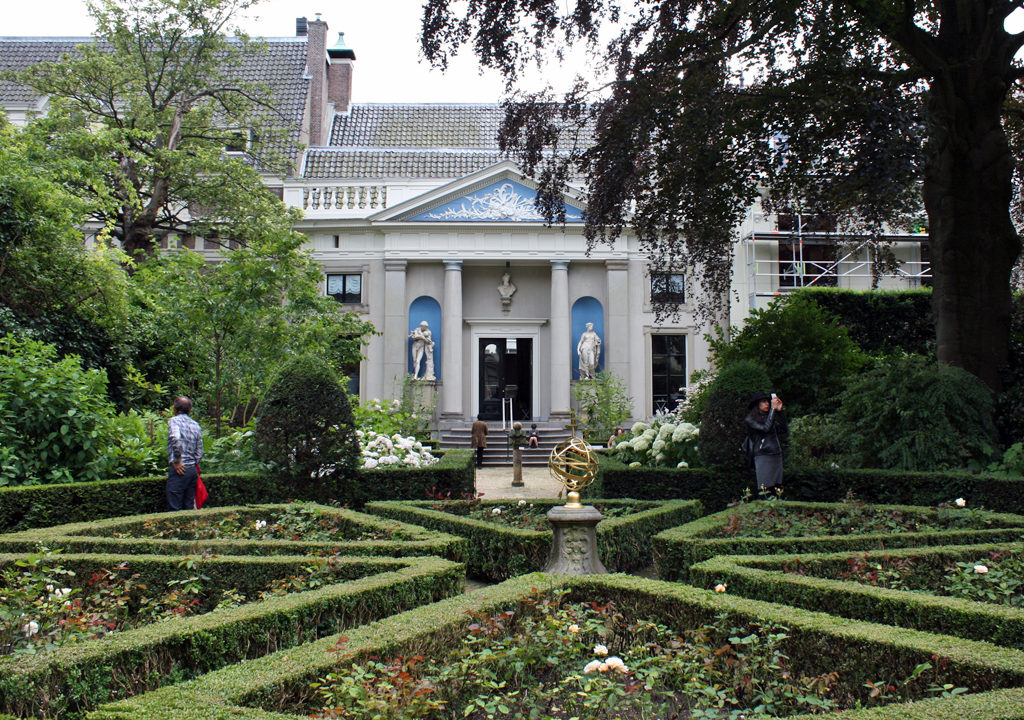An art lover’s perfect day in Amsterdam
Amsterdam, Kingdom of the Netherlands, is known for its canals and bridges, bicycles, and beautiful homes from the 17th- and 18th-century Dutch Golden Age.
It began with the Dutch Masters cigar box I acquired decades ago for an elementary school project. It was topped with a reproduction of what I now know to be one of Rembrandt paintings, The Syndics of the Drapers’ Guild (De Staalmeesters), from 1662. Drapers, you may know, judged and graded the quality of cloth. I was fascinated by detail of the figures.
Syndics of the Draper’s Guild, Rijksmuseum. Amsterdam
The painting is in Amsterdam’s Rijksmuseum, which has the largest collection of Dutch Masters paintings. My husband, Roger, and I share an interest in this art and seized the opportunity to spend more time in the city and museum after our Viking River Cruise from voyage Budapest to Amsterdam.
We had traveled with Viking River Cruises before and knew how quickly we had become accustomed to their level of service. To ease the transition back to everyday life and to make the most of our limited time in Amsterdam we booked their post-cruise Amsterdam extension, added optional tours with their experienced guides, and left the details to them.
Linie Aquavit was served onboard the Viking Njord at a special past passenger reception.
We simply had to choose between the modern and conveniently-located Mövenpick Hotel Amsterdam City Centre or the 5-star Pulitzer Amsterdam, which is in 25 elegantly restored 17th- and 18th-century Dutch Golden Age canal houses. It was named the “Best New Hotel in Europe” on Travel + Leisure’s 2017 It List.
About the Netherlands
Amsterdam is the capital, commercial and financial center of the Netherlands, but not the seat of government. That is in The Hague.
The Netherlands is one of the most liberal countries. Its open-minded, straightforward and highly tolerant people have gained notoriety for their coffee shops that sell soft drugs like cannabis and its showroom-style Red Light District of legal and controlled prostitution.
Kinderdijk
The Dutch work hard to maintain and improve the innovative system of dykes. This allows them to live successfully below sea level.
Amsterdam
We were warned to dodge the ubiquitous bicycles during our walking tour through the city’s neighborhoods. We quickly learned to cross streets with care!
Rijksmuseum, Amsterdam
There are over 70 museums in Amsterdam, and our tour began at Museumplein, or Museum Square. It is the site of the Rijksmuseum, the vast national museum dedicated to Dutch art and history from the Middle Ages, the Van Gogh Museum, with the world’s largest collection of the artist’s work, and the Stedelijk Museum, which features modern and contemporary art. This day we concentrated our favorite, the Rijksmuseum.
Rijksmuseum, Amsterdam
We stop here whenever we are in the city, and our knowledgeable guide added to the experience.
A little history
The 80 Years War for Dutch Independence (1568–1648) and the change from Spanish Catholic traditions to William of Orange’s Dutch Calvinism brought about a decline in religious art. Despite the current low church attendance, much of the Dutch way of life goes back to its Calvinist roots.
The Dutch Republic was the most prosperous in Europe during the 17th century Dutch Golden Age. This was a time of Dutch nationalism and of economic, cultural, and scientific prominence and pride. Secular art surged.
Model of the William Rex_Rijksmuseum_Amsterdam
Art became a celebration of Dutch life. The growth in the middle and merchant class created a demand for portraits, landscapes, maritime paintings and historical and battle scenes.
There were group portraits of the rich and renowned and meticulously composed still life paintings of the food and flowers of their lavish table settings. These showcase this age’s mastery of detail, realism, and light and shadows, all with a scientific kind of precision.
The grand and and idealized Catholic art and European Baroque evolved into detailed realism. There were depictions not only of the affluent in the finery that indicated their social status but also of ordinary people and everyday life, of village scenes and rollicking celebrations.
The Collection
Rembrandt’s Night Watch, Rijksmuseum
Our guide pointed out the intricacies of mood, light and shadow and regaled us with the stories behind the paintings. We joined the crowd standing before Rembrandt’s renowned and nearly life-sized painting “The Sortie.” Although it later became known as Night Watch (1642), it had actually been darkened by varnish and was not a night portrait at all. We also learned how it had been cut to fit the wall in the town hall and rolled up and moved to a cave during World War II. The painting also survived an 1975 attack with a butter knife that left zigzag marks and being sprayed with acid in 1990.
There were Jan Steen’s colorfully detailed and realistic scenes of lively and scruffy everyday peasant life. A disorderly Dutch home is still referred to as a “Jan Steen household.”
Jan Steen’s Het Vrolijke huisgezin, The Cheerful Family Home, Rijksmuseum
Franz Hals’ is known for his “rough style” with loose brush strokes. He is best known for his portraits of the bourgeoisie of Haarlem, where he lived and worked. Hals is credited with inspiring the Realist and Impressionist movements. His museum, in nearby Haarlem, is in a former almshouse for old men.
The Rijksmuseum has ship models, elaborate doll houses, fine porcelain and far more. It is a wonderful place to spend a day or more.
Canal cruise, Amsterdam
Next, we took a narrated canal cruise past the major sites. It is our favorite way to enjoy a close-up view of the colorful houseboats and elegant merchant houses lining the canals.
Lunch was at Haesje Claes, a typical Amsterdam restaurant known for its meatballs with pepper sauce and brown bean soup.
Restaurant Haesje Claes, Amsterdam
There are 6 buildings and an array of unique dining rooms connected by little hallways and stairs, all furnished with art and antiques.
Haesje Claes is named for a woman who founded Amsterdam’s first orphanage in 1520. The Amsterdam Museum, across the street, has information on the orphanage.
Museum Van Loon house, Amsterdam
The day was topped off with the Golden Age splendor of one of Amsterdam’s finest canal houses, the Museum van Loon house, built in the canal district in 1672 by the architect Adriaen Dortsman. Ferdinand Bol, a student of Rembrandt, was the first to live there.
It was later owned by the van Loon family, descendants of the co-founders of the Dutch East-India Company. The van Loons were one of the richest Dutch Empire families and among the political elite.
Museum van Loon house living room, Amsterdam
It is furnished with fine art, exquisite wood paneling and stucco work, porcelain, silver, and exquisite furniture collected through the centuries. Family portraits date to the 16th century. Fake doors create the illusion of symmetry.
Museum van Loon house carriage house, Amsterdam
This is the only site in Amsterdam where you can tour the entire canal house, garden and carriage house. Enjoy coffee or tea from the café in the formal garden. It is by the classical façade of the carriage house where the Van Loons’ extensive collection of carriages, sledges and harnesses are on display.
Tickets to another must-see destination, the Anne Frank House, are available online Our guide told us that the best time to visit is in the evening when it is less crowded.
For more information contact Viking River Cruises
and The Official Guide for Visiting Holland


